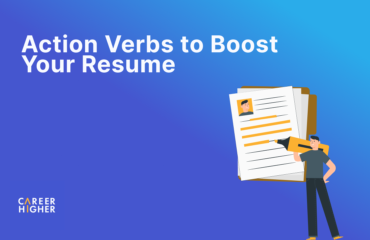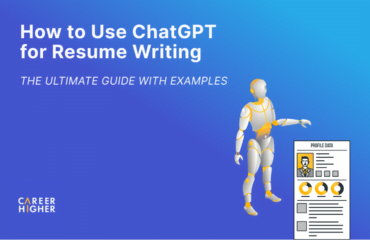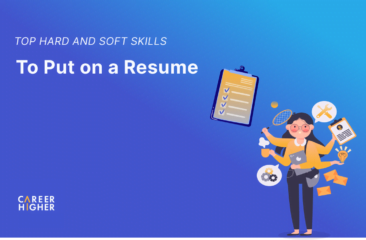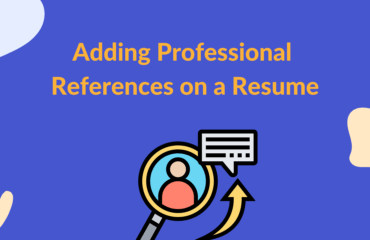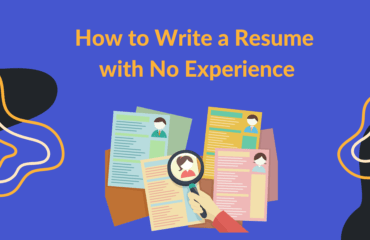Table of Contents
Employers typically look for certain attributes in a candidate’s resume content when applying for a new job. One of the most highly considered qualifications is work experience. According to NACE’s Job Outlook 2017 survey, nearly 91% of employers prefer applicants with work experience. This remains a fact in 2022 and the coming years.
Work experience allows you to build the skills and expertise necessary to navigate the challenges of a new role and fulfill critical job functions. This means your past work is a key factor for recruiters to know whether you can do the job right or not. In this article, we will share some tips on how you can effectively list your work experience on a resume to maximize your chances of achieving a positive outcome.
What to include in your resume experience?
The experience section is considered to be the heart of resume content writing. It makes up the most critical part of your qualifications, demonstrating your growth over the course of your career. This section typically includes the following.
1) Professional Experience
These are the professional jobs you’ve done in recent years, which are generally paid an annual salary. In most cases, the current or most recent role is the most relevant professional experience. Thus, these are listed in more detail.
2) Additional Experience
Some jobs may not fit the professional experience section. It’s either because they were held too long ago or are unrelated to the target job. In either case, they can be listed under the Additional Experience section.
3) Voluntary Experience
The Volunteer experience section is where you mention any kind of work done voluntarily and for free. If you don’t have extensive paid work experience, including this in your resume can be a great way to stand out from the competition. Doing so provides you with the opportunity to demonstrate relevant professional skills.
Tips and Tricks for Writing the Experience Section
How you write your experience section plays a key role in hooking a potential employer. So, it is essential to create one that effectively communicates your professional story. Below are some tips and tricks to help you out.
1) Use clear section headings
A single job opening generally attracts 250 applicants. So, if you’re a recruiter working nine to five, you may have limited time reviewing applications. In fact, a study conducted by Ladders revealed that recruiters only spend 7.4 seconds reviewing resumes. In such a case, starting your experience section with a clear heading is a must. This makes it easy for both the Applicant Tracking Systems (ATS) and human decision-makers to scan your resume and find pertinent details about your work history.
While you aim to stand out from the competition, you need to avoid unique, non-traditional section names. Stick with simple, straightforward headings, such as “Professional Experience”, “Work Experience”, or simply “Experience”. If you need to showcase old roles, you can simply create another resume section with the “Additional Experience” heading. For volunteer work, you can use “Volunteer Experience” as the section name.
2) Position the work experience section according to your career circumstance and goals
Like everything job-search-related, the positioning of your work experience section should be tailored to your circumstances and career goals. What are your target job’s requirements? Where are you in your career now? Your answers to these questions can help you make an informed decision on where to place your work experience in your resume.
If you have relevant experience, we suggest listing the work experience section below the professional summary. For professionals with limited work history, such as fresh graduates and career changers, below the education section is the recommended spot. This approach would enable decision-makers to quickly find the most relevant details to the job, which is beneficial for your application.
3) List work history in reverse-chronological order
While there are various resume formats, we highly recommend listing your work experience in reverse-chronological order. To do this, imagine going backward through time and showing recruiters where you’ve been. You need to start from the current job and follow up with older ones.
The reverse-chronological order provides recruiters with a clearer insight into your career trajectory. It’s simple and easier to understand in comparison with other resume formats. So, if your current resume format is not in reverse chronological order, make sure to organize the content before applying for your next job.
4) Focus on relevant information
Recruiters and hiring managers tend to focus on the work experience section as this is expected to include the most essential details of your background. So, it is imperative to include information that communicates how you can potentially apply the skills and expertise to benefit your target company. Your experience section should ideally include the following:
a) Employer details
Start each job entry with the full official name of the companies for which you’ve worked. We also suggest including the cities and states where your previous employers are located. If the employer is not widely known, provide key information about the company to give decision-makers a clearer picture of your background. The description should include the industry your previous employer operates in, size, revenues, and what they do. If the company is a well-known brand, like Google, Facebook, and Amazon, the company description is not required and can be excluded.
Example:
“Company XYZ is a healthcare solutions company operating in 160 countries, generates $28M in annual revenues, and has 105K employees.”
b) Job Titles
We suggest listing your job titles below the company name. Avoid using creative names and acronyms to refer to the positions you held. Instead, use a concise and straightforward job title. For example, use “Head of Marketing” instead of “Senior Marketing Lead for Operations and Analytics”.
If you had similar duties and responsibilities in the past, change your job title to the one you are applying for. This helps ensure you’re found when recruiters search by job title during the screening process. As long as your roles were essentially the same, this tactic is not deceptive.
c) Employment Dates
Your employment dates play an essential role in communicating your depth of experience. In most cases, your years of experience determine your job level match for your target job. For instance, you are applying for a senior-level role. You may be considered a great fit if you have ten or more years of relevant experience. So, make sure your dates are accurate.
Furthermore, you also need to ensure that your work experience section dates are properly formatted. The formats MM / YY, MM / YYYY, or Month YYYY are known to work best for both ATS and human decision-makers. Avoid skipping the dates or only using year for employment dates to ensure your actual experience level will be read correctly.
d) Responsibilities and Achievements
Before jumping into detailing your responsibilities and achievements, we recommend writing a summary of your key responsibility and the purpose of your role. This provides decision-makers a quick grasp of what you’ve done for each role. Let’s take a look at the example below.
“Responsible for developing and managing business growth initiatives in the region to ensure financial sustainability.”
Many professionals have a misconception that “the more, the merrier approach” is the way to impress decision-makers. Yes, the goal is to stand out. But this does not mean you need to list everything you’ve done in your previous roles. When creating resume bullet points, it is best to focus on your top three to five most relevant duties and accomplishments. This makes your application more relatable to employers, which can work to your advantage.
While you may be responsible for many things in your previous jobs, these shouldn’t be the sole focus of your work description. Instead, highlight your successes using the STAR (situation, task, action, results) method. This provides your target employer with a fuller picture of your competencies, how you’ve previously put them into practice, and the results you’ve achieved. Here are some examples.
- Pioneered the restructuring of the business unit (situation/task); initiated and executed the disinvestment of low margin product lines; designed market adequate manufacturing concept for new products (action); increased operational efficiency by 3% (result)
- Drove foreign exchange and market volatility forecasting and management (situation/task); administered business analysis and engineering business resilience strategies (action); achieved a full, sustainable compensation of FX losses, saving $8M (result)
- Manage a cross-functional team of 15 members (situation/task); maintain employee success factors that aligned individual abilities with tasks and growth opportunities; facilitate coaching and mentoring for continuous improvement (action); boosted team productivity by 37% (result)
- Established operations in Latin America (situation/task); an identified market for target projects and vehicle launches; determined point of market entry to engage potential customers; ensured financial and legal compliance (action); generated $70M in new sales revenue (result)
- Led continuous improvement and process standardization (situation/task); identified process deficiencies and executed best practices for data generation, analytics, and measures (action); improved the division’s financial performance by 27% (result)
e) Additional Experience
The more recent and senior roles are typically considered more relevant. So, older and less relevant roles don’t need to be detailed in the work experience section. For professionals with less than ten years of experience, we recommend focusing on the first five years of their careers. On the other hand, those with more than ten years of experience can concentrate on the first ten years of their work history. Everything else can be summarized at a higher level under the Additional Experience section. Here’s what it looks like in practice.

Adding Additional Experience to your resume
5) Consider adding voluntary work
Experience goes beyond paid work. You can also learn valuable skills from voluntary work or projects that can benefit your target job. So, adding these to your resume can be worth considering. In such a case, we suggest listing these types of work under a separate section called Voluntary Experience. Doing this can be beneficial under the following circumstances.
- If they are relevant to your target job
- You have limited relevant experience
- There is an employment gap in your resume
When listing voluntary experiences, avoid going overboard with the details. Simply summarize your primary responsibilities at a high level. Here’s what it looks like in practice.

Adding voluntary work to your resume
Your work experience is unarguably one of the most essential parts of resume writing. So, listing it right is crucial to your application’s success. As a rule of thumb, stick with appropriate formatting, clear section headings, and most relevant information. This makes it easy for ATS and decision-makers to skim through it and understand your background. If you are still unsure how to do it and prefer support from professional resume writers, we would be happy to help.



